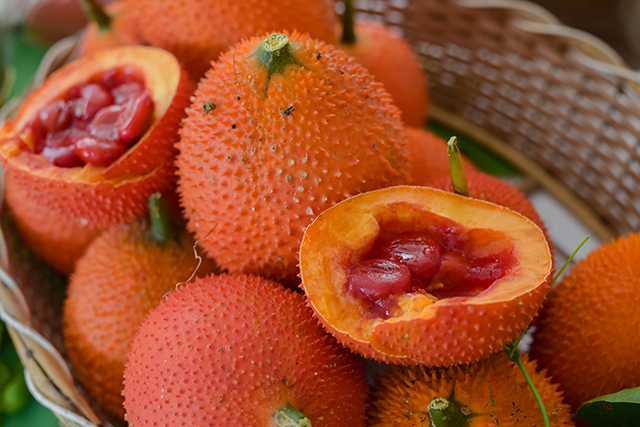
The researchers evaluated the nutritional properties, as well as the antioxidant levels, of the gac plant (M. cochinchinensis Spreng., Cucurbitaceae). The findings indicated that the fruits of the gac fruit possessed nutraceutical properties and an adequate amount of antioxidants.
This bolsters data from earlier studies – which noted that the gac fruit contained carotenoids and tocopherols, with a high concentration of lycopene – a potent agent against lipid peroxidation and oxidative stress. Additionally, the pulp had alpha-tocopherol (vitamin E) concentrations which can increase the body's resistance to certain cardiovascular diseases and cancers.
Moreover, other benefits of the gac fruit include:
- Improved eye health – An antioxidant found in the gac fruit, zeaxanthin, protects the eyes from ultraviolet rays and reduces oxidation of the eye tissues. Gac fruit also contains beta-carotene which aids in maintaining good eyesight and reduces the likelihood of blindness. (Related: Gac superfruit improves vision, immune function.)
- Enhanced immune system – Aside from protecting against blindness, the beta-carotene present in gac helps with white blood cell development. This includes lymphocytes, which assist the body in fending off disease.
- Better skin health – Gac fruit contains a lot of antioxidants. Lycopene, in particular, helps reduce damage caused by cell oxidation and contributes to healthier and better-looking skin.
- Boosting cardiovascular condition – The antioxidants present in gac not only help the skin, but it also contributes to overall heart health. Specifically, it helps prevent atherosclerosis, that is, the condition wherein plaque builds up inside the arteries. The prevention of atherosclerosis is important as it prevents the development of more severe conditions such as coronary heart disease and arrhythmia.
- Helping the prostate – The lycopene content in gac fruit may help reduce the likelihood of developing benign prostatic hyperplasia (BPH), commonly known as the enlargement of the prostate. Left unchecked, the condition can worsen into a bladder infection or even bladder stones.
The gac fruit is described to taste mildly like avocado. For every 100 grams of gac fruit, it has 17.4 g of carbohydrates, 1.6 g of fiber, 2.1 g of protein, 36 mg of calcium, 0.3 g of total fat, and 0.9 g of ash.
More about gac
The gac plant is a tropical vine native to Southeast Asia, where it is called the Chinese bitter cucumber or baby jackfruit. In Vietnam, gac is cooked into glutinous rice which creates the orange rice dish xoi gac. In India, it goes by the name bhat kerala, and it is commonly used in Assamese cuisine, growing in the Cachar Hills region of Assam, India.
In terms of morphology, gac plants are described to be strong climbing plants that have a tuberous root. The stems and the branches are known to be glabrous, or pubescent, and even tomentose on occasion. The fruits have light orange flesh and can either be ovoid, globose, or oval in shape.
The plants are known to have high nutritional and medicinal properties, which have been used in many local practices. The gac fruit, in particular, is used to treat various eye conditions, skin problems, and wounds. The juice is considered a healthy beverage that promotes eye, heart, and prostate health, as well as improved immunity, reproduction, and skin.
Find more about gac and other healthy food items by going to Food.news today.
Sources include:
Please contact us for more information.























